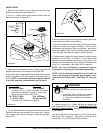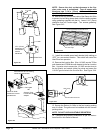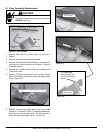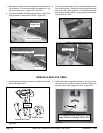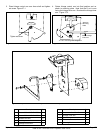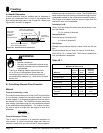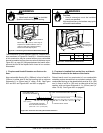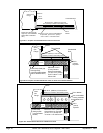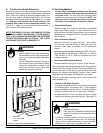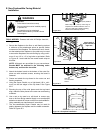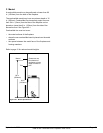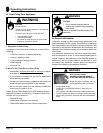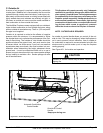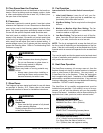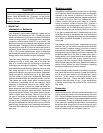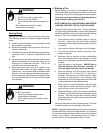
September 1, 2008
September 1, 2008
Heat & Glo • NorthStar EPA Fireplace • 480-1081C
Page 41
Seal with
non-combustible
sealant
C. Position the Hearth Extension
Position and secure the hearth extension over the protective
metalstripsthathavebeenplacedpartiallyunderthereplace
front. These strips should be protruding approximately 2 in.
(51mm)fromunderthereplacefrontand2in.(51mm)on
bothsidesofthereplaceopening.SeeFigure18.1onpage
18. Seal the crack between the hearth extension and
replace with a bead of non-combustible sealant. See
Figure41.1.Applyanon-combustiblenishingmaterialof
your choice to the hearth extension.
NOTE:
SEE PAGES 10-12 & 38 “CLEARANCES TO COM-
BUSTIBLES, HEARTH EXTENSIONS / FLOOR PROTEC-
TION” FOR CLEARANCES REqUIRED FOR DIFFERENT
HEARTH EXTENSION INSTALLATIONS. THE CLEAR-
ANCES MUST BE STRICTLY ADHERED TO.
Figure 41.1 Position the Hearth Extension
Fire Risk
• Hearth extensions are to be installed only
as illustrated to prevent high temperatures
from occurring on concealed combustible
materials.
• Hearth sealing strips prevent burning or
hot particles from inadvertently falling
directly on combustible surfaces in the
event the building should settle and
disturb the original construction.
WARNING
Fire Risk
• Maintainclearances.
• Use only non-combustible material below
standoffs, material such as cement board is
acceptable.
WARNING
• Framingornishingmaterialusedonthefrontof,or
in front of, the appliance closer than the minimums
listed, must be constructed entirely of noncombustible
materials (i.e., steel studs, concrete board, etc.).
D. Finishing Material
Do not install combustible materials over the metal
face of the replace! This poses a safety hazard and
may start a re. You may only use noncombustible
materialoverthemetalfaceofthereplace.NOTE: The
decorative fascia must be removable for future ser-
viceability of the Automatic Combustion Control.
• Combustible Material
Materialsmade ofor surfacedwithwood, compressed
paper,plantbers,plastics,orothermaterialsthatcan
igniteandburn,whetherameproofedornot,orwhether
plastered or un-plastered shall be considered combus-
tible materials.
• Non-Combustible Material
Materialswhich willnot igniteand burn. Suchmateri-
als are those consisting entirely of steel, iron, brick, tile,
concrete, slate, glass or plasters, or any combination
thereof.
MaterialsthatarereportedaspassingASTME136,Stan-
dardTestMethodforBehaviorofMaterials,inaVertical
Tube Furnace at 750°C, shall be considered non-com-
bustible materials.
• Non-Combustible Sealant Material
Sealantswhichwillnotigniteandburn:SuperCalstick
After completing the framing and applying the facing material
(drywall) over the framing, a bead of non-combustible seal-
ant must be used to close off any gaps at the top and sides
betweenthereplaceandfacingtopreventcoldairleaks.
Largegapscanbebridgedwithberglassropegasket.
Onlynon-combustiblematerialsmaybeusedtocoverthe
metalreplacefront.
• Cardboard OR Metal Template
A cardboard template of the front is printed on the outside
oftheshippingbox.Itmeasures1/8in.(3mm)biggerall
the way around than the actual front. Cut out the template
along the outside of the line for use in your installation.
A metal template is also available for more durable
continued use remaining accurate over time. (See page 66.)



